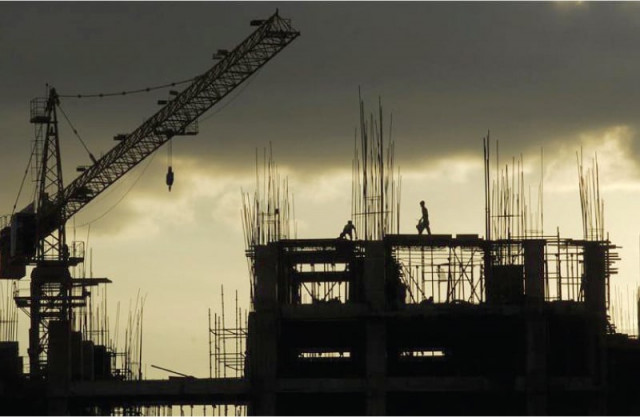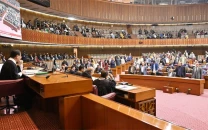A futuristic industrial policy
It may boost exports to $100b within five years through export-led development

An Industrial Advisory Council, constituted by the federal government, is formulating the National Industrial Policy. The committee has articulated its vision of an export-led industrial development to take Pakistan’s exports to $100 billion within five years.
An appraisal of Pakistan’s existing industrial architecture and its structural frailties, which have hamstrung economic development, is essential to avoid the repetition of tested-and-failed policy prescriptions of the past.
The current industrial structure has made Pakistan’s economy an outlier in a high-growth geographical region, which is the epicentre of global economic growth, with two fast growing economies, China and India, at our borders. Our economic underperformance is, therefore, not because of any geographical disadvantage but endogenous economic management gaps.
The following simple equation explains the nature of our structural dysfunction. During FY 2022-23, despite the stringent import suppression measures, Pakistan’s imports of $55.3 billion were double its exports.
Only $5-6 billion of imports were estimated to have been used as inputs into the export-oriented production; the remaining $50 billion was the domestic consumption, directly or indirectly as inputs of the ‘import substitution’ industry.
It means that the predominant part of Pakistan’s industry is not a participant in exporting activity and remains a net consumer of foreign exchange.
Read Hub industrialists seek energy supply
The economists have divergent views on the rationale of a national industrial policy. Many experts argue that it’s for the market to decide which industry is needed, since a government-steered industrial development creates distortions by rewarding the companies based on their lobbying skills instead of production efficiencies.
On the other hand, countries like Japan, South Korea, Taiwan and many Southeast Asian economies have successfully used industrial policies to create the ‘Asian Miracle’. In Pakistan, the absence of a structured policy has made the industrial growth random rather than planned. Our industrial structure has following four major distortions.
First, an anti-export bias is deeply ingrained in the industrial architecture. Pakistan’s high import tariffs create an incentive for domestic industries to sell locally instead of exporting.
Simplistically stated, a product available at $100 in the global market, after imposition of 20% import tariff, is sold for $120 in Pakistan, assuming a zero cost of importing. It creates multiple damages: (a) the consumer is forced to pay $120 instead of $100; (b) the domestic producer, shielded from competition, has a captive domestic buyer even if he produces at $120; (c) hypothetically, even if he is able to produce below $100, why would he export it at $100, if he can sell for $120 locally. Hence, the anti-export bias.
Second, import substitution remains the mainstay of industrial development. It has a widespread support amongst the decision makers and vested interests. The proponents of this policy advocate, good as they are at the advocacy, that such an industry saves precious foreign exchange on imported finished products.
What is not told is that the protected import substitution industry, being uncompetitive, is unable to export any units of its finished products and remains permanent burden on foreign exchange in the form of imported inputs, eg raw materials, services and/or energy.
Three, the FDI in industrial sector has remained largely market-seeking instead of efficiency-seeking. The Multi National Enterprises (MNEs) operating in Pakistan are little different in character than the locally-owned import substitution industries.
Read Businessmen seek 5,000 acres for industrial zone
In the developing countries, MNEs are directly involved in 80% of international trade. In Pakistan, MNEs remain predominantly focused on producing for local market and remain a net consumer of foreign exchange for imported inputs. They add yet another burden on foreign exchange in the form of repatriation of profits abroad.
Four, the policy capture remains the hallmark of our current industrial structure. It has developed a type of industry that is unable to compete on efficiency, and thrives on policy capture, state handouts, competition-eroding state interventions and excessive protection.
The sectoral policies and development plans usually offer subsidies and protection without addressing the most critical question of viability after the withdrawal of subsidies. Consequently, the industry remains addicted to subsidies and protection and refuses to outgrow the perennial infancy stage.
A forward-looking industrial policy needs to institute radical reforms at the structural and enterprise level. At the structural level, the industrial edifice requires an overhaul to ensure transition from import substitution to export-led industrial growth – not in name only but in essence.
A dispassionate evidence-based analysis is required to identify the sunset and sunrise industries. A bad policy fails to identify its winners; a worse designates its losers as winners.
The critical benchmark for a viable industry is its global competitiveness and ability to export. Value addition may be an economic virtue, but an export-oriented intermediate industry is healthier for the economy than a domestically-focused value-added sector, which continues to drain foreign exchange on imported inputs.
Read 1,500 acres at Pak Steel Mills allocated for industrial park
At the enterprise level, a futuristic industrial policy aims at creating an enabling environment, which encourages the entry of new firms into the market, and rewards efficiency and productivity over lobbying skills.
It is true that in the short term, subsidies and incentives are skillfully employed as policy instruments for development of certain industries. However, all such subsidies are time-bound and the end goal is a self-sustaining industrial sector since a subsidy is essentially a business loss transferred by the enterprise to the government.
An enterprise, which is viable only on continuing loss transfer to the government is unviable and not worth investing in, unless there is a compelling strategic consideration.
The development of an effective industrial policy, which aims at building a globally competitive industrial structure is a challenging task. The biggest challenge for the policymakers would be the manoeuvres of the vested interests, who have developed sophisticated skills in exploiting the policy forums for extracting more subsidies and protection.
The vital goal is to steer the transition from factor-driven inward-looking industrial structure to efficiency-driven export-led economy in the medium term and innovation-driven in the long term.
THE WRITER IS A FORMER DIRECTOR GENERAL OF TRADE POLICY, MINISTRY OF COMMERCE
Published in The Express Tribune, January 8th, 2024.
Like Business on Facebook, follow @TribuneBiz on Twitter to stay informed and join in the conversation.


















COMMENTS
Comments are moderated and generally will be posted if they are on-topic and not abusive.
For more information, please see our Comments FAQ